
Hey y’all! Thanks so much for stopping by. My name is Laura and I am an Elementary School Counselor turned Curriculum Writer. At my precious school in Nashville, TN, 97% of my students were living in …

An overwhelmed, exhausted, and overworked 3rd grade teacher walked into my office. It was April – standardized testing season. With panic in her voice, she shared that she was up all night worrying about whether she had prepared her students well enough for THE TEST. Had she done enough intervention with Sally, or had she reviewed sufficiently with the whole class? If her students didn’t do well, what did that mean about her as a teacher? Despite her best efforts each and every day, was she failing her students?
Over 40% of teacher evaluations each year depend on standardized test score results. Our school had already cut back on extracurricular activities like art, music, and even recess to allow for more test prep time. There was a palpable tension and worry among our faculty, and they weren’t even the ones taking the test! Imagine how our children were feeling.
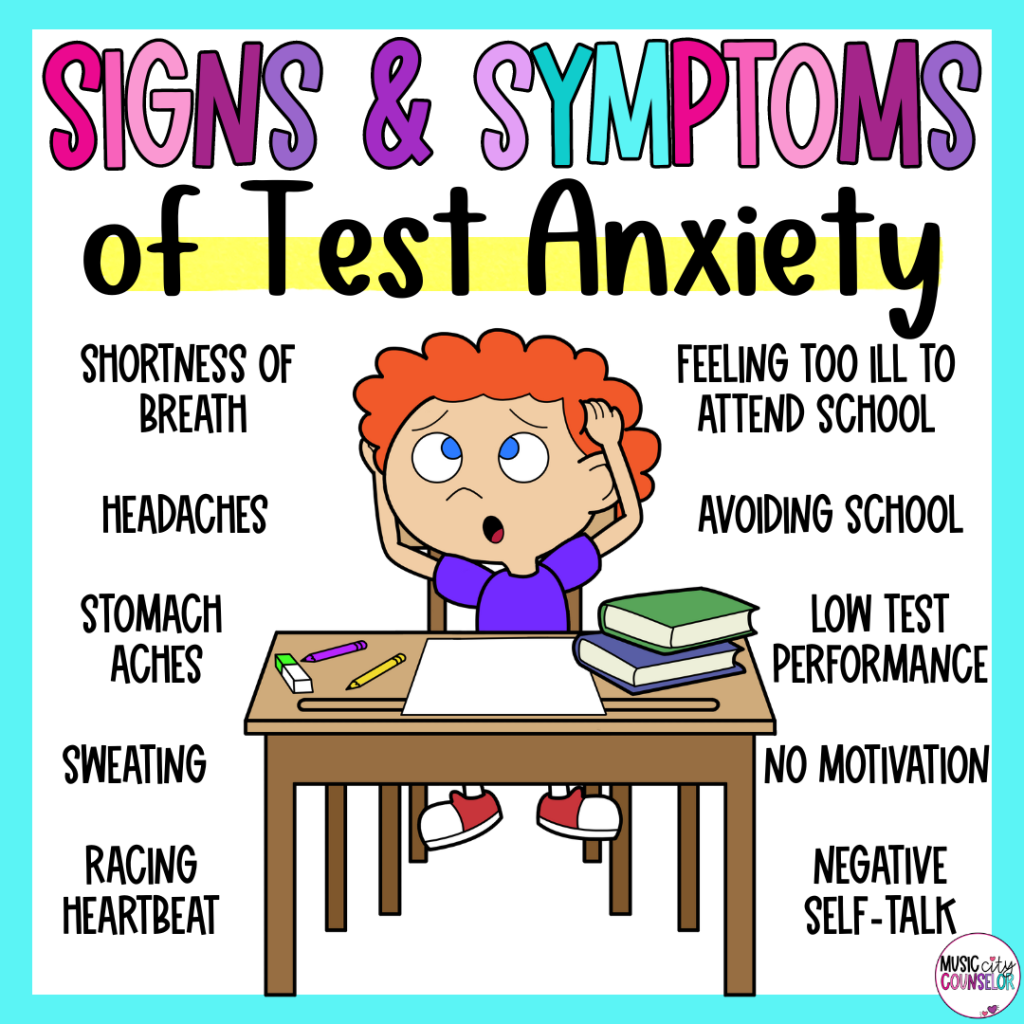
Test anxiety is a type of performance anxiety associated with the pressure to succeed on tests of any kind. It can trigger fear, worry, and physical symptoms. Test anxiety is arguably one of the biggest, and most widespread, challenges that students face today. In recent years, testing has steadily been on the rise, and anxiety associated with these tests is increasing at an alarming rate. Almost 35% of students struggle with test anxiety. That’s 10 million children in the U.S. alone!
Students with test anxiety may experience headaches, nausea, diarrhea, excessive sweating, rapid heartbeat, shortness of breath, or weakness. I have experienced firsthand students vomiting on their tests, fainting during a test, and feeling too ill to attend school on testing days.
Test anxiety is associated with negative outcomes such as low motivation, lack of confidence in schoolwork, anger, negative self-talk, decreased comprehension, and avoidance of schoolwork and tests. This can result in negative mental health outcomes, lower grades, and under-performance throughout their school years. In the most severe cases, students may even drop out of school.
As counselors, teachers, and administrators, we must keep in mind that students need support and education on learning to recognize and manage test anxiety. Standardized tests will likely remain a major part of education for years to come, so we need to equip students with meaningful strategies to help them cope. Teaching children healthy ways to manage test anxiety early in the school year, and reviewing them throughout, can dramatically improve their school and testing experience. Learning techniques to reduce test anxiety can be a total game-changer in student (and teacher) happiness and success!
The first step in helping children cope with test anxiety is to teach them to recognize their bodies’ physiological signs. Often, students are not even aware that they are experiencing stress at all. By teaching students to listen to their bodies, they can learn to identify their feelings and take action before they panic or lose control. To help students understand the symptoms of anxiety, I like to use a visual like the one below. We talk through what each symptom looks and feels like, and help students identify which signs they typically experience when they are nervous. This helps children name their feelings in the moment in the future.
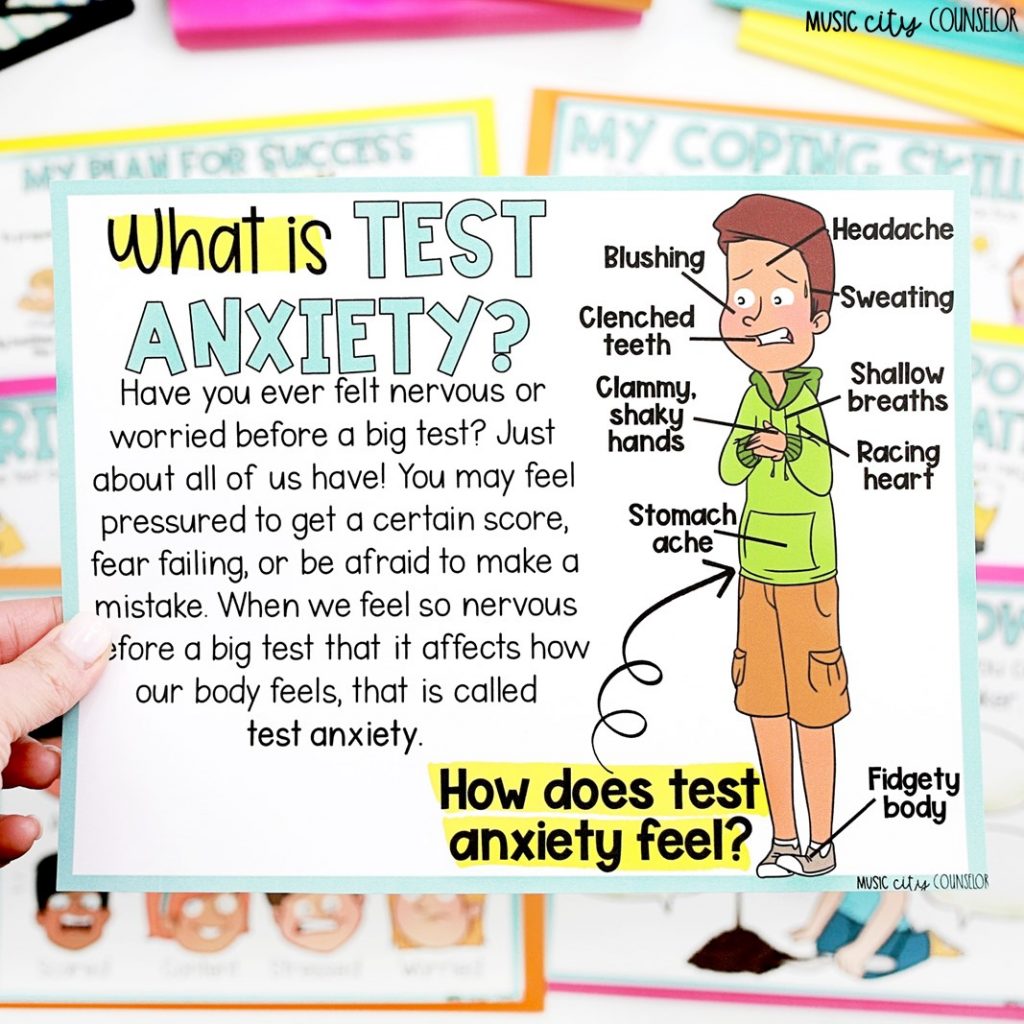
Once children understand how they experience anxiety, they can learn to name their feelings. I teach children to say “I am feeling anxious” or “I am feeling worried,” rather than “I am anxious” or “I am worried.” This helps them separate the feeling from their identity. Children realize that they are more than their emotion, and feelings are only temporary. With time and coping skills, these feelings will soon be on their way! I like to use activities shown in the image below to check in with students on their feelings and worries before a big test.
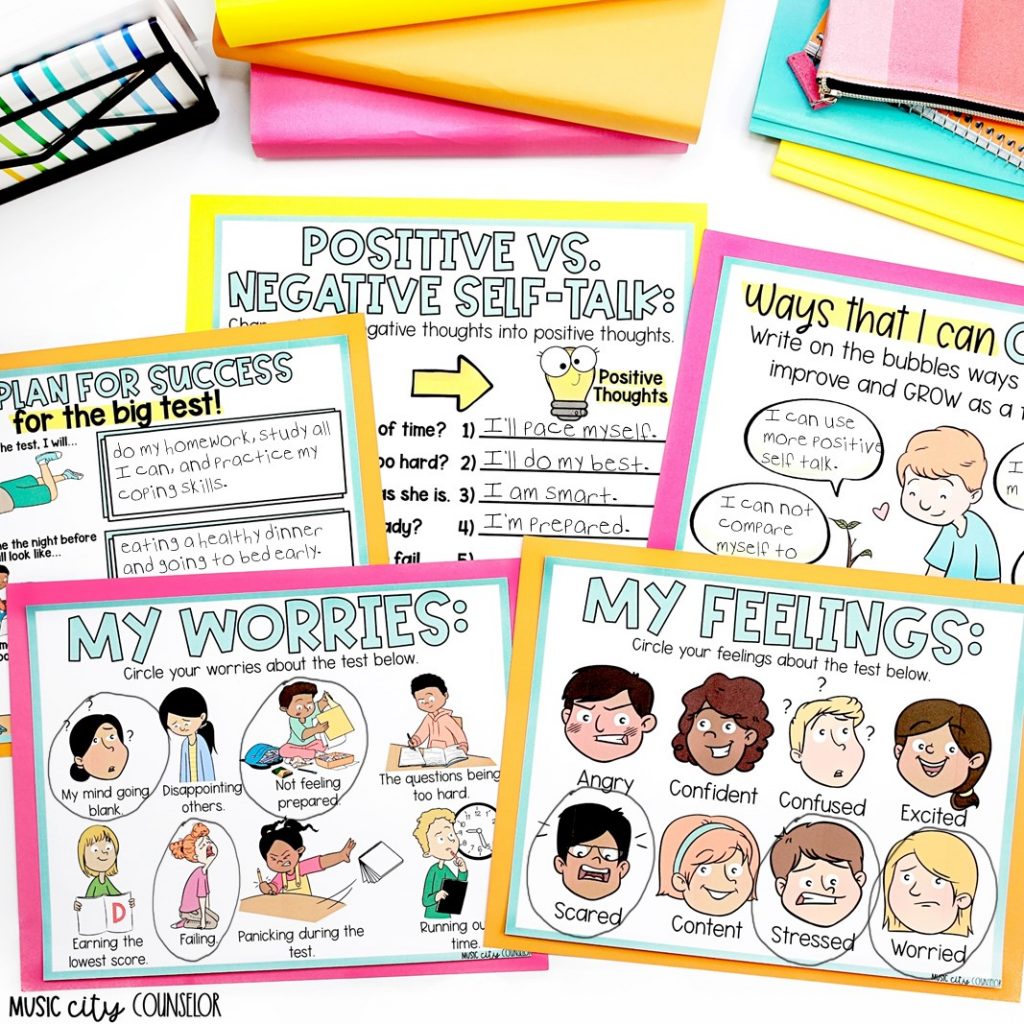
Once students have identified their worries, I like to use CBT techniques to help them de-catastrophize and reality test their concerns. I use questions like:




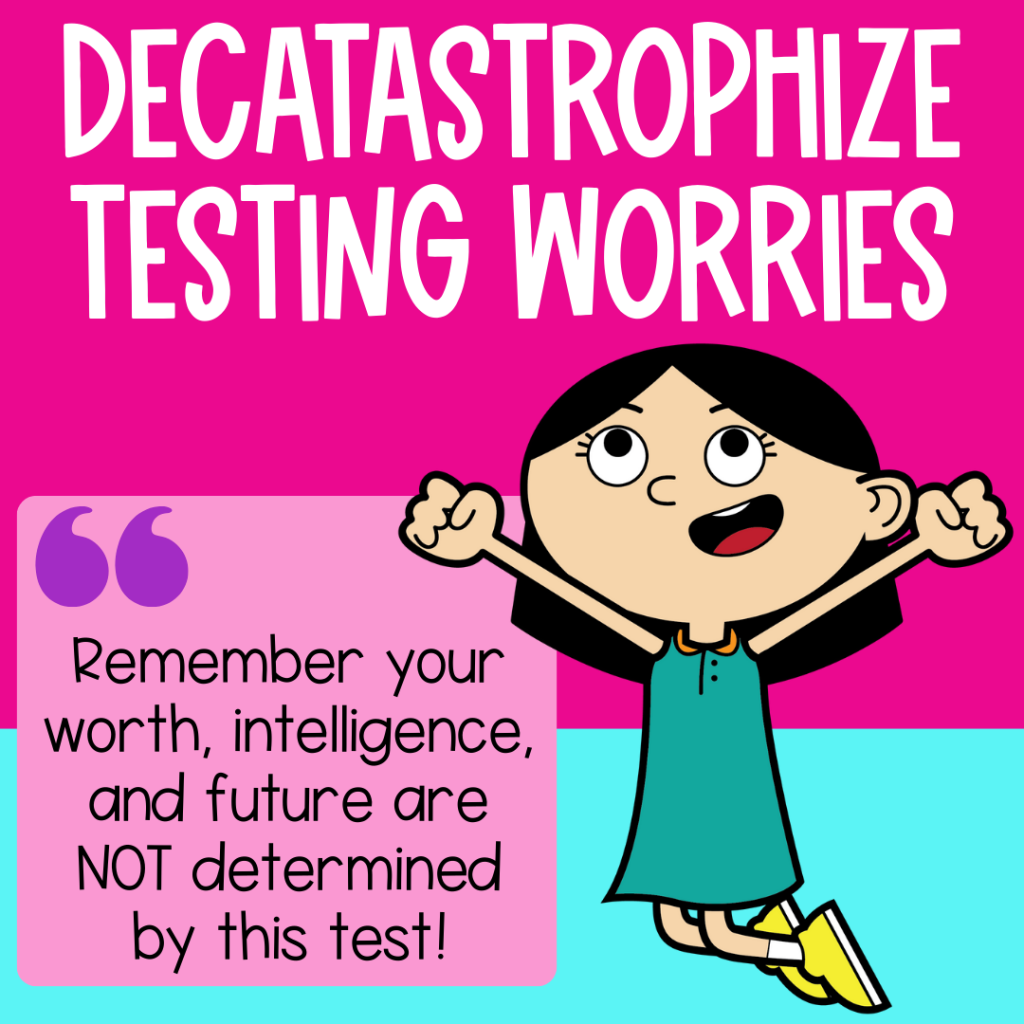
Questions like these can help students understand that their biggest worries and fears may not be as rational or likely to happen as they think. They can help students align their feelings and thoughts more closely with reality, build their confidence, and make a plan to cope even in the unlikely chance that the worst does happen.
Yes, this test is important. But will the world end if they don’t earn the score they wanted? Will they have to stay in 4th grade forever? No. Life will go on just as it did before, and they will learn from this experience and move forward! Discussing and processing these worries in classroom and small group settings can help children realize that they are not alone in their feelings, and help them find support within their classroom community.
It is also critical to help children understand that the big test does NOT define them. There is so much more to them than a standardized test score! The test does not measure the love, kindness, and compassion that they showed the student with disabilities in their class. It does not measure the beautiful song they learned to play on the piano. And it cannot measure their patience in teaching their grandma how to use an iPhone. All of these things are arguably MORE important than a standardized test score. If only our society valued them as such!
The final and most crucial step in helping children manage their test anxiety is to teach, model, and practice coping strategies. It is important to teach and model several techniques so that children can discover which skills work best for them. I like to tell students that these coping skills will give them a “test anxiety toolbox,” and different situations will require them to use different tools!
The first coping skill that I always teach, since it is one of the easiest to do but the most effective, is to stop, breathe, and count to 10. This moment of pause can reset our brains and bodies and prevent us from losing control. I also like to teach “hand breathing,” where the child uses one finger to trace up and down each finger, as they simultaneously breathe in and out ten times. In my test anxiety resource, students learn nine practical coping skills for calming test anxiety. They include:

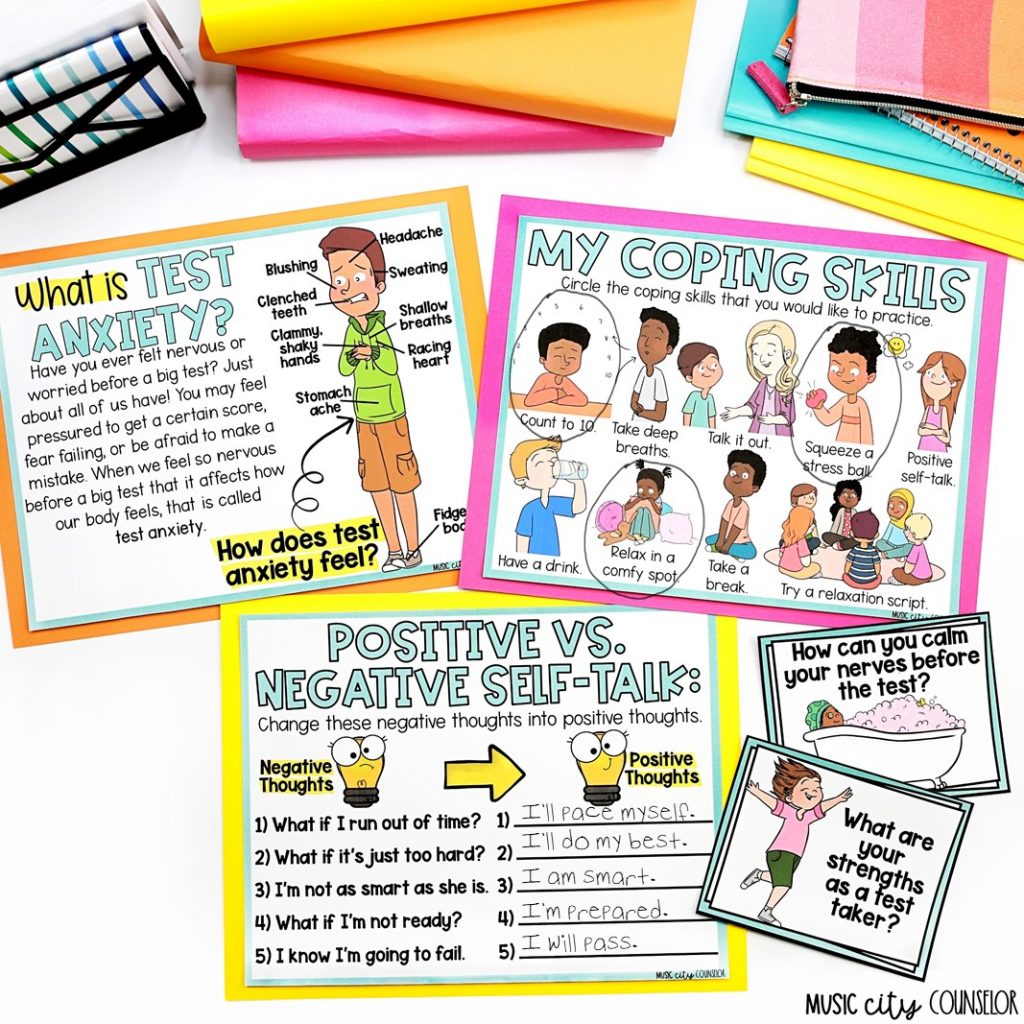
To reinforce this material in a hands-on and interactive way, I love using manila folders and hook-and-loop fastener dots to create this bilingual lap book. It is super easy to create and compact to store anywhere and pull out as needed! The lap book asks students to choose two feelings, two worries, and two coping skills to help them manage their emotions about the big test. Once they have practiced with me a few times, students can use it independently to help identify their feelings and build their confidence.
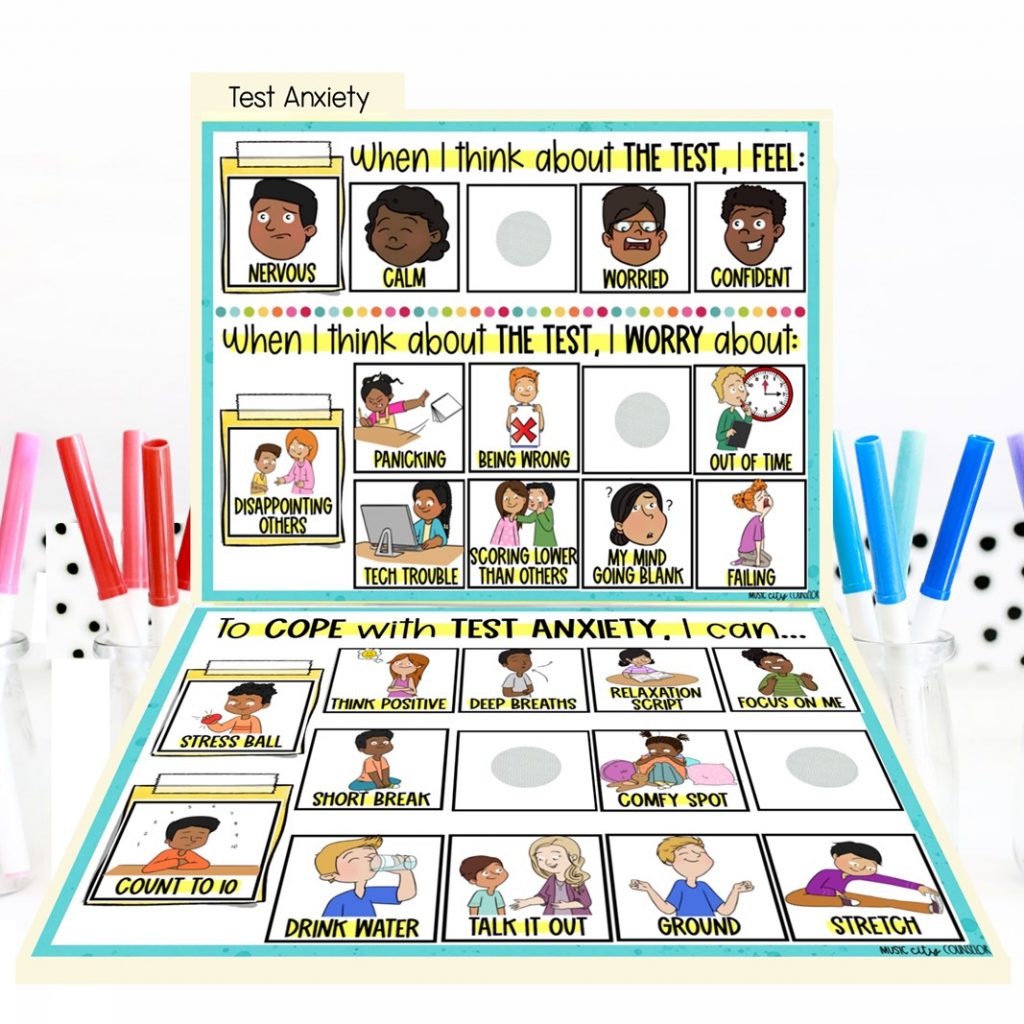
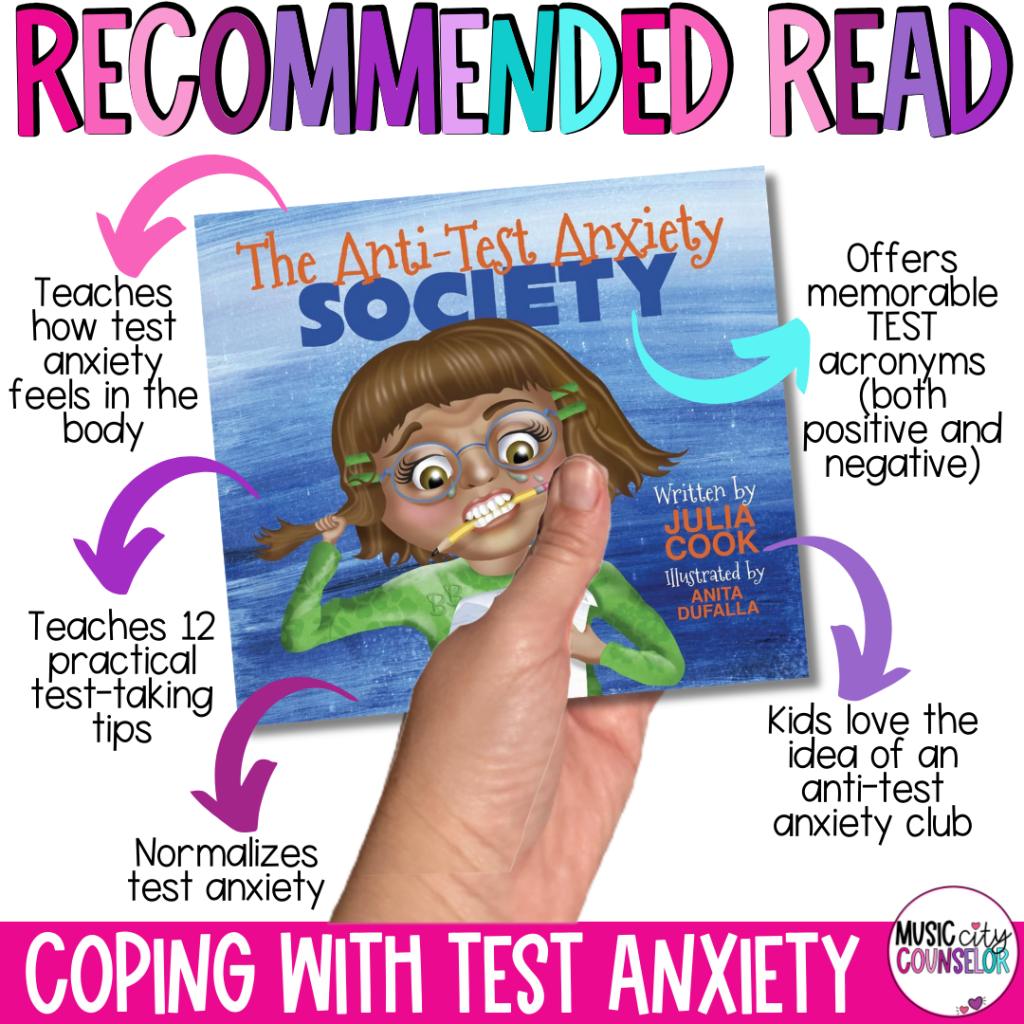
I love using books in my counseling practice, and “The Anti-Test Anxiety Society” by Julia Cook is the perfect read for helping kids cope with test anxiety!
It follows the story of BB, an energetic and positive girl…until there is a test to take! BB’s teacher invites her to become a member of the Anti-Test Anxiety Society, and teaches her 12 practical test-taking strategies.
BB also learns how to use her “GET TO” brain instead of her “HAVE TO” brain. This helps BB understand the difference between positive and negative self-talk, and how the way we think affects our feelings, choices, and performance.
I love this story so much that I created a companion lesson to go along with it! My favorite part of this lesson is the interactive Anti-Test Anxiety Member Toolkit – perfect for individual and small group work!

I hope that this post offered a helpful understanding of test anxiety and ways to help children manage it. I wish you and your students the absolute best on the big test – and always!
You may be interested in:

| Cookie | Duration | Description |
|---|---|---|
| cookielawinfo-checkbox-analytics | 11 months | This cookie is set by GDPR Cookie Consent plugin. The cookie is used to store the user consent for the cookies in the category "Analytics". |
| cookielawinfo-checkbox-functional | 11 months | The cookie is set by GDPR cookie consent to record the user consent for the cookies in the category "Functional". |
| cookielawinfo-checkbox-necessary | 11 months | This cookie is set by GDPR Cookie Consent plugin. The cookies is used to store the user consent for the cookies in the category "Necessary". |
| cookielawinfo-checkbox-others | 11 months | This cookie is set by GDPR Cookie Consent plugin. The cookie is used to store the user consent for the cookies in the category "Other. |
| cookielawinfo-checkbox-performance | 11 months | This cookie is set by GDPR Cookie Consent plugin. The cookie is used to store the user consent for the cookies in the category "Performance". |
| viewed_cookie_policy | 11 months | The cookie is set by the GDPR Cookie Consent plugin and is used to store whether or not user has consented to the use of cookies. It does not store any personal data. |
2 Responses
Is there anyway I can print these sheets on test anxiety to give to my students?
Hi Susie! Thanks so much for your question and for reading! You can find my printable resources on test anxiety here:
https://musiccitycounselor.com/product/testinglapbook/
https://musiccitycounselor.com/product/test-taking-skills-test-anxiety/
Enjoy! 🙂